Beginner's Guide to Street Photography & Photographing Strangers
Welcome to this beginner’s guide to street photography and photographing strangers. Pye Jirsa has recently gone out and captured a lot of street portraits of strangers. A couple of these sessions were shot with and featured his friend, David Suh (@davidsuhphoto). Street photography is one of those subjects that he doesn’t see getting a lot of coverage, so he puts together some simple tips and tricks to help you (and your subjects) get comfortable when photographing strangers.
You can find more in-depth coverage of the concepts below in our Premium Workshops.
Tip 1: Gear
Let’s begin by talking about the gear. The first thing I would say is go light and know your gear well. Any camera will work, including your smartphone (as we illustrated in our Creative Photography 101 workshop). What’s more important, however, is your lens choice. A smaller lens and body combo will not intimidate strangers (as much), so I often take out a 35mm or 50mm lens on a Canon EOS R or EOS R6 body.
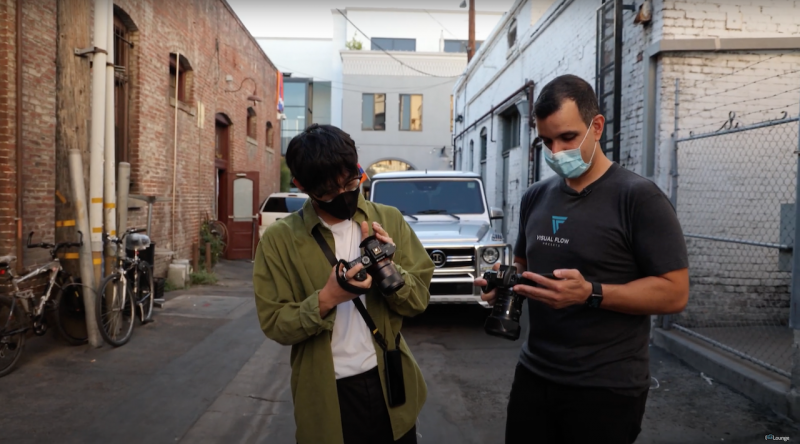
My favorite focal length for street photography is actually 35mm because I can get a little bit more background, and I can intentionally use the added lens distortion for dramatic effect, such as for low-angle, bottom-up shots, etc.
Tip 2: Location
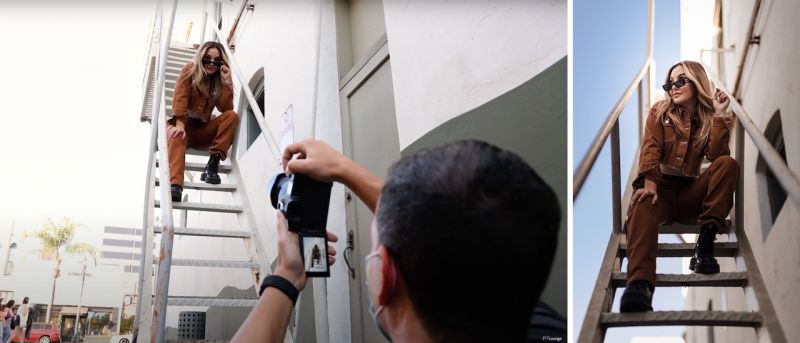
When David and I were out in Pasadena, for example, we approached Erica, who was there taking pictures with her friend for her fashion boutique (you can find more info here: @casualallure). While David and Erica talked, I looked at the scene and noticed a staircase. I liked the staircase because I could place Erica on the stairs and use the railing for leading lines. I could also use the light falling between the buildings to light Erica’s face. I already had these shots in mind before it was my turn to shoot.
Tip 3: Establishing Credibility
Be sure to perfect your approach and establish credibility quickly. You might consider handing out business cards or something similar, and that is fine. Remember that your wardrobe and attire will also play into establishing your credibility.
What I found to be most effective is to approach someone, introduce myself (“Hi, my name is Pye. I’m a professional photographer.”), and then hand (or show) them my phone, which will have my Instagram, TikTok, or YouTube channel loaded and ready to view. When they see that I create quality imagery and have a decent following, they know that I’m someone they can begin to trust. Of course, since we are living in a post-COVID environment, I have my face mask on during the approach, and instead of handing them a phone to review my work, I just hold it out and show it to them.
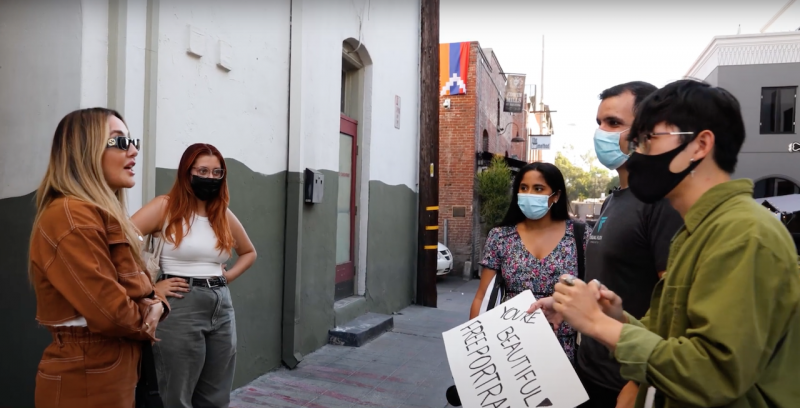
If you are just starting out and you don’t have an extensive portfolio or following, then you should just stick with the introduction and ask to take their portrait. You may get a few more rejections, but there’ll be plenty of people that will still take you up on the offer.
I have found that younger people tend to be more impressed with Instagram. For the older folks, whom I approach often, I don’t even bother with the phone. I just introduce myself and say something like, “I would love to photograph you and tell your story.” Whatever you say, keep it simple.
Tip 4: Handling Rejection
To play this game, you’re going to have to learn to be okay with rejection. You don’t have to like it, but you have to be okay with it. This is true when approaching anybody for anything.
Look, I have sold every possible thing I can imagine door-to-door. I’ve sold meat door-to-door, and I’ve even sold religion. I was actually a practicing Mormon when I was younger and I went on a mission and sold religion door-to-door. You better believe I’ve had that door slammed in my face thousands of times. That said, while I have learned to be comfortable with rejection, it doesn’t mean that I enjoy it. I don’t go out and seek it; however, I have learned to live in that space of being comfortable with the uncomfortable feeling of rejection.
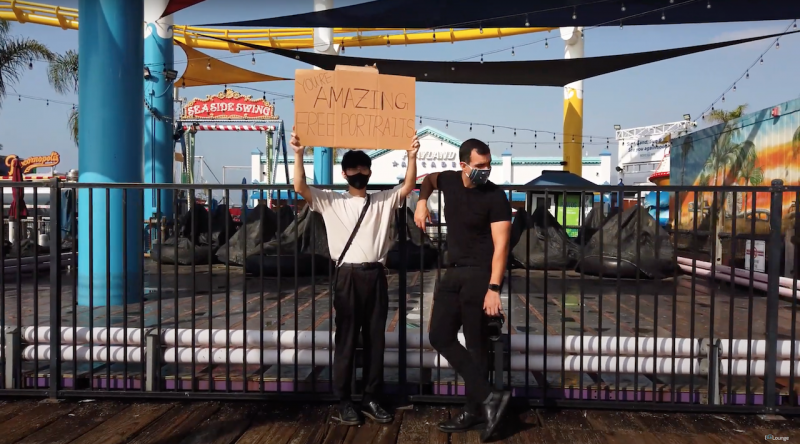
At the end of the day, this is a numbers game. One helpful tip I’ve discovered for dealing with rejection is setting a max number of rejections for the day. For example, you might accept that you’re going to get rejected 50 times, and when you do, you can head home. Of course, your number doesn’t have to be 50. Start out with a low number, like 5-10 times or something like that. Here’s the deal, though. When I set my number, I know there is no way I can possibly get rejected 50 times in a day. When I shot with David, we set our number at 10 rejections. I think we ended the day with four or five rejections in total. It can be helpful to give yourself a goal and have something to work towards.
Tip 5: Time Limits
Be reasonable with your time request. If someone agrees to let you take a picture, then take one or two minutes, maybe even up to five minutes. Whatever it is, be clear and ask for 3-5 minutes of their time up front. Then, be sure to respect the time limit. You have to understand that these people did not plan to be photographed by you. They have other things to do, or maybe they’re just enjoying their day. Please be respectful of the allotted time.
I found it helpful to ask for five minutes and then set a timer on my phone. Honestly, five minutes is usually quite a bit more time than I need, but it’s an easy commitment for them to make and five minutes gives me a good amount of time to actually keep shooting. I don’t have to worry about taking up more time because my phone will alert me and ensure that I don’t use up more time than I asked for.
Tip 6: Incorporating Personality
Now that you’re shooting, I want you to go to the spots you scanned previously and capture the shots you visualized. When I was out shooting with David, I noticed a large flower on the wall while we were walking around and looking for people to photograph. On the way back, I asked David if I could photograph him in front of the flower. I had already pre-visualized this photograph.
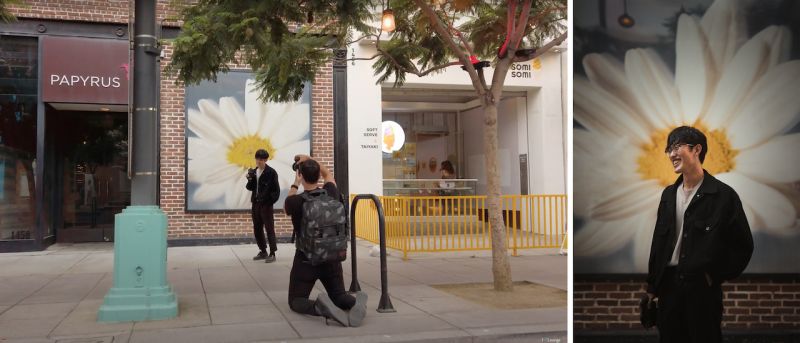
The reason I like this shot is because of David’s personality. It’s great when you can incorporate their personality into your compositions, like we did here with David. If you know him, he’s a very fun, energetic, positive, and quirky guy. This flower reminded me of him.
I wanted to use the flower as the background and position David so that his face would land right over the yellow center. The flower petals pull us into his portrait. I also wanted to make him laugh, to get him to emote. We captured this shot from start to finish in 60 seconds because it was pre-visualized. As I mentioned earlier, scouting and pre-visualizing your shots can help you dramatically versus just getting lost in the moment and not knowing what to shoot.
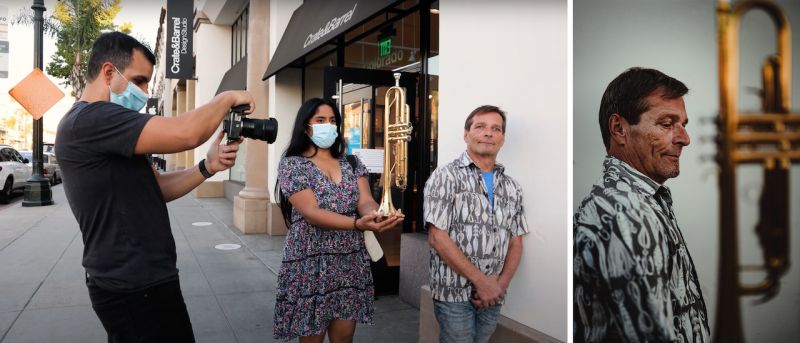
In another example, I photographed a guy named Buddy playing his trumpet in Pasadena. For Buddy’s portrait, I positioned him against the wall and I held the trumpet in my hand, using it as a foreground object to frame Buddy against the clean background. There are tons of different ways to incorporate your subjects’ personalities into the street photographs that you take, even though you’re capturing these images within a matter of moments.
Tip 7: Communication Etiquette
You’ll need to break out your best bedside manner, or in photographer terms, your photographer etiquette, when capturing portraits of strangers on the street. Most of these people are not professional models. You’re going to need to direct & pose them, as well as communicate what kind of shot you want.
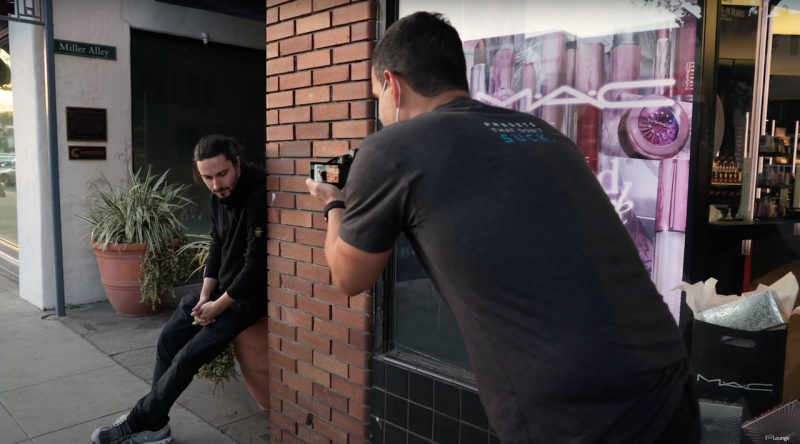
Don’t just leave them standing there, awkwardly staring at you in front of the camera. Help them pose. Direct and guide them as you are clicking away. Give them positive reinforcement, encourage them, and let them know how great they look. When you speak, don’t create awkward and uncomfortable moments.
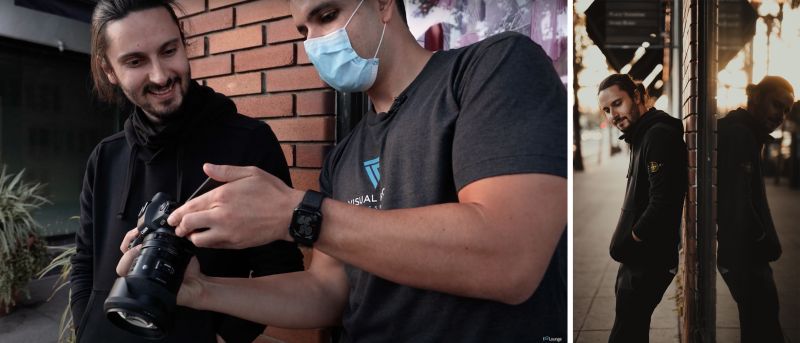
One of my favorite things to do, after capturing one or two images, is to show them the images. They almost always think they can’t be looking that great, but when I show them the first or second shot, they quickly realize the shots are great and they get that much more into the shoot.
Tip 8: Contact Information
Finally, when your time is up and you finish capturing someone’s images, be sure to get his/her/their information. These people were kind enough to let you photograph them. When you post the images, share the images with them and send them a full resolution copy. I can’t tell you how beneficial this is for you and your photography business. Regardless of what type of business you have, think about this for just a second. Many of these people that you’re photographing are people that have their own businesses, their own following, plenty of friends, people they know getting married, people they know wanting portraits, etc. They’re going to get your images and share them online, and you will be able to connect with their audience and their networks. There’s no reason to be stingy with these photographs of strangers who’ve volunteered to pose for you.
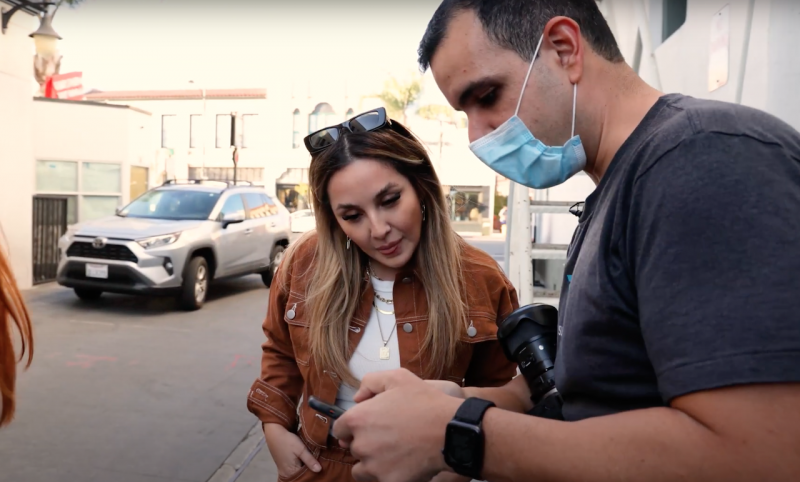
The biggest problem I think photographers have in this setting is forgetting to get the subject’s info or else simply forgetting to actually follow up, produce the images, post the results, and share them. Make sure that you’re following up and actually completing the process, giving your subjects a good experience, just like you’d do for paying clients. They may not have given you cash, but they paid with their time. Respect it.
Conclusion
We hope you enjoyed this beginner’s guide to street photography & photographing strangers. In my own personal experience of photographing strangers, I have found it to be incredibly rewarding, not only from the fun and the enjoyment of sharing my passion and skill as a photographer with these people, but also from getting to know them and seeing their confidence & self-perception change when they see themselves in a photograph shot by a stranger. So, step out of your comfort zone, give it a shot, and try out the tips I’ve shared above. For more photography education, check out our Premium library of workshops.
You may also like: How To Safely Use Smoke Bombs for Photoshoots
This article was written by
Pye Jirsa, originally published on SLR Lounge and shared with permission.


















0 comments:
Post a Comment